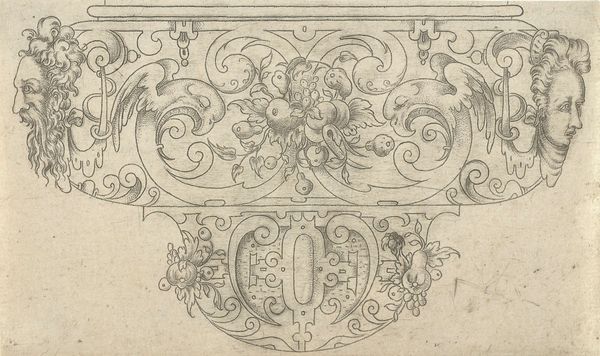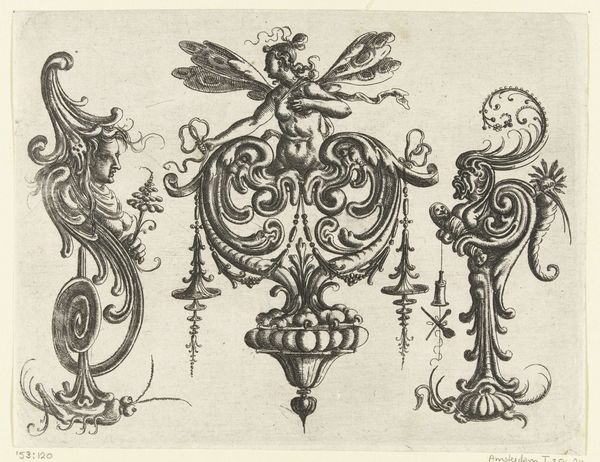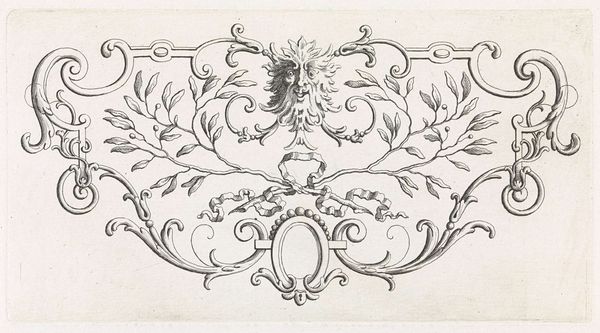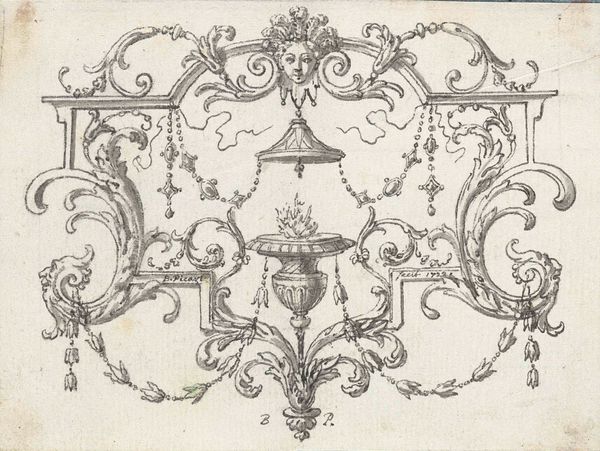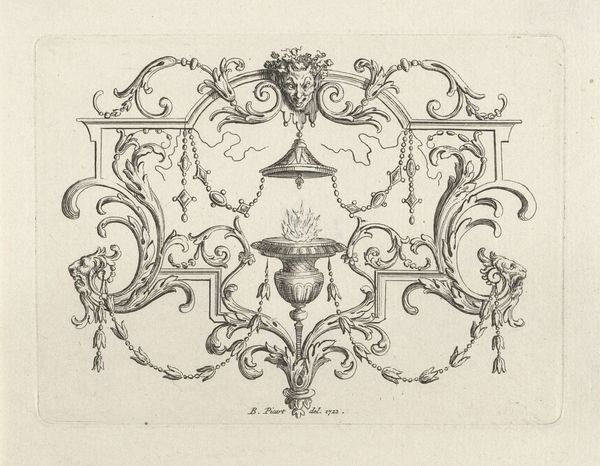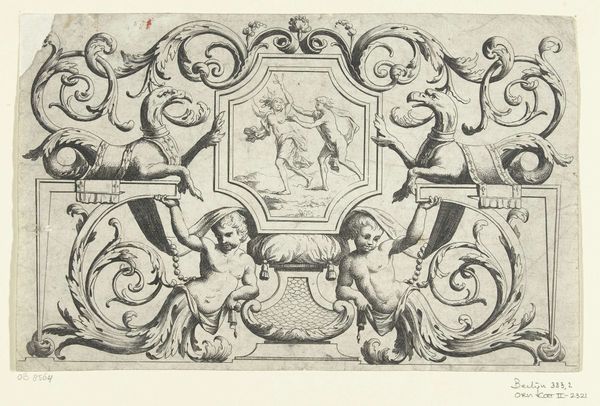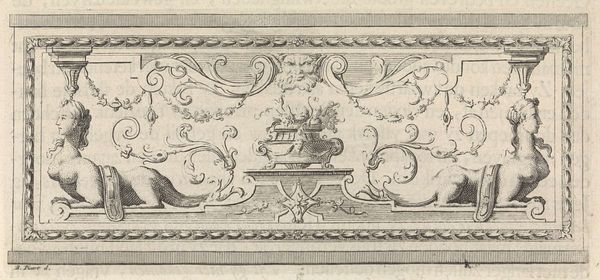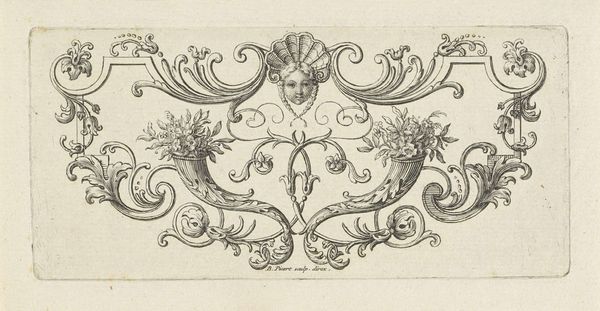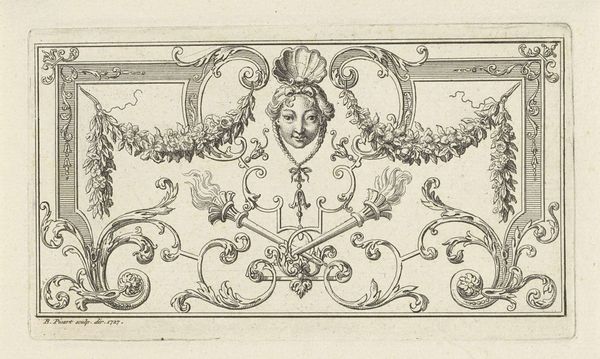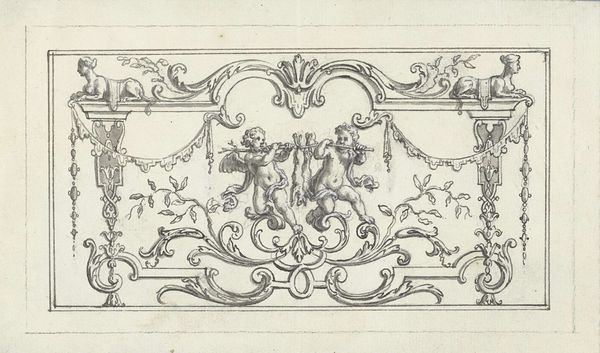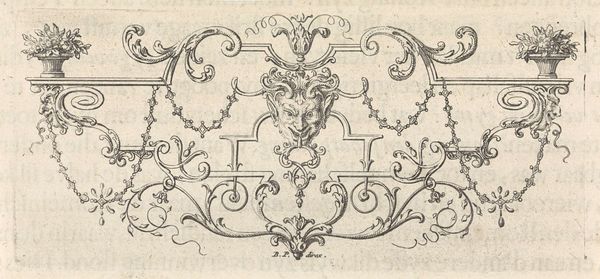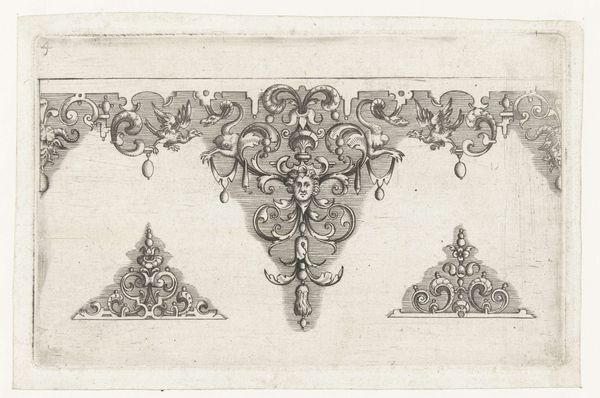
Ornament met een mascaron, guirlandes, bladranken en schelp 1683 - 1733
0:00
0:00
graphic-art, ornament, engraving
#
graphic-art
#
ornament
#
baroque
#
old engraving style
#
line
#
decorative-art
#
engraving
Dimensions: height 84 mm, width 137 mm
Copyright: Rijks Museum: Open Domain
Bernard Picart produced this Ornament with a mascaron, garlands, leaf tendrils, and shell using etching. Although undated, it reflects the aesthetic values of the late 17th and early 18th centuries, a period when ornament played a key role in the construction of social identity. Here, Picart presents us with an elaborate ornamental design. The composition shows classical motifs such as the mascaron, garlands, and shells. These elements were part of the visual vocabulary of the European elite. During the reign of Louis XIV in France, ornament became heavily associated with power, luxury, and control. These images of abundance and classical harmony served to visually reinforce the social hierarchy, conveying messages about taste, refinement, and social status. Understanding the social life of images such as this one requires that we look at the historical record. What kinds of buildings were decorated with ornament? Who paid for them? And what messages did they convey?
Comments
No comments
Be the first to comment and join the conversation on the ultimate creative platform.
